-
 Bitcoin
Bitcoin $101,898.5005
-0.75% -
 Ethereum
Ethereum $2,258.1125
-1.07% -
 Tether USDt
Tether USDt $1.0004
0.01% -
 XRP
XRP $2.0178
-2.93% -
 BNB
BNB $624.0243
-1.53% -
 Solana
Solana $134.3298
-0.90% -
 USDC
USDC $0.9999
0.01% -
 TRON
TRON $0.2675
-2.05% -
 Dogecoin
Dogecoin $0.1538
-1.96% -
 Cardano
Cardano $0.5482
-1.11% -
 Hyperliquid
Hyperliquid $35.5636
5.45% -
 Bitcoin Cash
Bitcoin Cash $453.4902
-1.66% -
 Sui
Sui $2.5134
-2.97% -
 UNUS SED LEO
UNUS SED LEO $9.1292
1.77% -
 Chainlink
Chainlink $11.8457
-1.60% -
 Stellar
Stellar $0.2312
-2.73% -
 Avalanche
Avalanche $16.9721
0.29% -
 Toncoin
Toncoin $2.7549
-3.82% -
 Shiba Inu
Shiba Inu $0.0...01081
-1.10% -
 Litecoin
Litecoin $80.8250
-0.71% -
 Hedera
Hedera $0.1374
0.21% -
 Monero
Monero $305.4827
-2.36% -
 Ethena USDe
Ethena USDe $1.0006
0.00% -
 Dai
Dai $1.0000
-0.01% -
 Polkadot
Polkadot $3.2085
-3.12% -
 Bitget Token
Bitget Token $4.0845
-3.13% -
 Uniswap
Uniswap $6.3353
-1.63% -
 Pi
Pi $0.5085
-0.70% -
 Pepe
Pepe $0.0...08913
-3.82% -
 Aave
Aave $232.7090
-0.58%
How to combine OBV with RSI indicators? Who should I listen to when the two indicators contradict each other?
OBV and RSI can enhance trading decisions by confirming trends and identifying reversals, but traders must handle conflicting signals carefully.
May 24, 2025 at 03:28 am

The combination of the On-Balance Volume (OBV) and Relative Strength Index (RSI) indicators can provide traders with a more comprehensive understanding of market trends and potential price movements. OBV focuses on the volume flow to predict changes in stock price, while RSI measures the speed and change of price movements to identify overbought or oversold conditions. When used together, these indicators can help traders make more informed decisions. However, it's crucial to understand how to interpret situations where these indicators provide conflicting signals.
Understanding OBV and RSI
OBV is a momentum indicator that uses volume flow to predict changes in stock price. When the OBV line is trending upwards, it suggests that buying pressure is increasing, and the price is likely to follow suit. Conversely, a downward trend in OBV indicates increasing selling pressure, which could lead to a price decline. The OBV is calculated by adding the volume on days when the price increases and subtracting the volume on days when the price decreases.
RSI, on the other hand, is a momentum oscillator that measures the speed and change of price movements. It ranges from 0 to 100 and is typically used to identify overbought or oversold conditions. An RSI above 70 suggests that an asset might be overbought and could be due for a price correction, while an RSI below 30 indicates that it might be oversold and could be poised for a price rebound.
Combining OBV and RSI for Trading Decisions
Combining OBV and RSI can help traders confirm trends and identify potential reversal points. Here's how to use these indicators together:
Confirming Trends: If both OBV and RSI are trending in the same direction, it can provide a strong confirmation of the current market trend. For instance, if the OBV is rising and the RSI is above 50, it suggests a strong bullish trend. Conversely, if the OBV is falling and the RSI is below 50, it indicates a strong bearish trend.
Identifying Divergences: Divergences occur when the price action and one of the indicators move in opposite directions. If the price is making new highs but the OBV or RSI is not, it could signal a potential reversal. For example, if the price is reaching new highs but the OBV is declining, it may indicate weakening buying pressure and a possible bearish reversal.
Overbought/Oversold Conditions: Use RSI to identify overbought or oversold conditions. If the RSI is above 70 and the OBV is still rising, it might suggest that the bullish trend is strong and could continue despite being overbought. Conversely, if the RSI is below 30 and the OBV is still falling, it might indicate that the bearish trend is strong and could persist despite being oversold.
Handling Contradictory Signals from OBV and RSI
It's not uncommon for OBV and RSI to provide conflicting signals, and knowing how to handle these situations is crucial for effective trading. Here's what to do when the indicators contradict each other:
Assess the Strength of the Signals: Evaluate the strength of the signals from both indicators. If the OBV is showing a strong trend but the RSI is in overbought territory, consider the overall trend strength. A strong OBV trend might suggest that the price could continue to rise despite the overbought condition.
Consider Additional Indicators: Use other technical indicators to confirm or refute the signals from OBV and RSI. For instance, moving averages, MACD, or Bollinger Bands can provide additional context and help you make a more informed decision.
Evaluate Market Context: Consider the broader market context, including news events, market sentiment, and macroeconomic factors. Sometimes, external factors can influence price movements and cause discrepancies between OBV and RSI.
Prioritize Based on Trading Strategy: Depending on your trading strategy, you might prioritize one indicator over the other. For example, if you're a trend follower, you might give more weight to the OBV. If you're a momentum trader, you might focus more on the RSI.
Practical Example of Combining OBV and RSI
To illustrate how to combine OBV and RSI in a real trading scenario, let's consider a hypothetical example:
Scenario: You're analyzing the price chart of Bitcoin (BTC). The price has been trending upwards, and you want to determine if the trend will continue or if a reversal is imminent.
Step-by-Step Analysis:
- Check OBV: You notice that the OBV line is also trending upwards, indicating strong buying pressure.
- Check RSI: The RSI is currently at 72, suggesting that Bitcoin might be overbought.
- Interpretation: Despite the RSI indicating an overbought condition, the strong upward trend in OBV suggests that the bullish momentum is still robust. You decide to stay in the trade but set a tighter stop-loss to manage risk.
Adjusting Trading Strategies Based on OBV and RSI
Adjusting your trading strategy based on the signals from OBV and RSI can help you navigate different market conditions more effectively. Here are some strategies to consider:
Trend Following: If both OBV and RSI confirm a strong trend, consider entering trades in the direction of the trend and holding until signs of reversal appear.
Mean Reversion: If the RSI indicates overbought or oversold conditions but the OBV shows a strong opposing trend, you might look for mean reversion opportunities. For example, if the RSI is overbought but the OBV is still rising, you might anticipate a short-term pullback before the trend resumes.
Breakout Trading: Use OBV and RSI to identify potential breakout points. If the OBV is breaking out to new highs and the RSI is showing strong momentum, it could signal a strong breakout trade.
Common Pitfalls When Using OBV and RSI
While OBV and RSI are powerful tools, there are common pitfalls that traders should be aware of:
Overreliance on Indicators: Relying too heavily on indicators without considering other factors can lead to poor trading decisions. Always use OBV and RSI in conjunction with other analysis methods.
Ignoring Market Context: Failing to consider the broader market context can lead to misinterpretations of OBV and RSI signals. Always factor in news events, market sentiment, and macroeconomic trends.
Misinterpreting Divergences: Divergences between price and indicators can be misleading if not interpreted correctly. Always look for confirmation from other indicators or market signals before acting on a divergence.
FAQs
Q1: Can OBV and RSI be used for all types of cryptocurrencies?
A1: Yes, OBV and RSI can be applied to all types of cryptocurrencies. However, the effectiveness of these indicators can vary depending on the liquidity and volatility of the specific cryptocurrency. More liquid and less volatile assets tend to provide more reliable signals.
Q2: How often should I check OBV and RSI?
A2: The frequency of checking OBV and RSI depends on your trading style. Day traders might check these indicators multiple times a day, while swing traders might check them less frequently, perhaps once or twice a day. It's important to align your indicator checks with your trading strategy and time frame.
Q3: Are there any specific time frames that work best with OBV and RSI?
A3: OBV and RSI can be used across various time frames, from short-term charts like 1-minute or 5-minute charts to longer-term charts like daily or weekly charts. The choice of time frame should align with your trading strategy and objectives. Shorter time frames are more suitable for day trading, while longer time frames are better for swing or position trading.
Q4: How can I backtest my strategy using OBV and RSI?
A4: To backtest a strategy using OBV and RSI, you can use trading platforms or software that support historical data analysis. Here's how you can do it:
- Select a Time Frame: Choose a historical period that aligns with your trading strategy.
- Apply OBV and RSI: Add OBV and RSI to your chart and set your desired parameters (e.g., RSI period, OBV calculation method).
- Define Entry and Exit Rules: Clearly define your entry and exit rules based on OBV and RSI signals.
- Run the Backtest: Use the platform's backtesting feature to simulate trades based on your rules.
- Analyze Results: Review the performance metrics to assess the effectiveness of your strategy. Adjust your rules as needed based on the results.
Disclaimer:info@kdj.com
The information provided is not trading advice. kdj.com does not assume any responsibility for any investments made based on the information provided in this article. Cryptocurrencies are highly volatile and it is highly recommended that you invest with caution after thorough research!
If you believe that the content used on this website infringes your copyright, please contact us immediately (info@kdj.com) and we will delete it promptly.
- BNB Price Check: Stablecoin Surge vs. Prediction Rollercoaster
- 2025-06-23 14:25:12
- Metaplanet's Bitcoin Bonanza: Holdings Skyrocket Amidst Market Swings
- 2025-06-23 14:25:12
- Global Meltdown, Investors, and Safe Havens: Navigating the Storm
- 2025-06-23 14:30:12
- NFT Sales Snapshot: Guild of Heroes, Polygon, and the Market's Shifting Sands
- 2025-06-23 15:25:12
- AVAX Support Holds, Eyes Potential Surge: What's Next?
- 2025-06-23 15:11:16
- Cointelegraph Under Fire: Exploits, Phishing, and the Crypto Media Minefield
- 2025-06-23 15:11:16
Related knowledge

How to read the sideways consolidation after the bottom volume and long positive line?
Jun 23,2025 at 02:28pm
Understanding the Sideways ConsolidationWhen analyzing cryptocurrency charts, sidewards consolidation refers to a phase where prices move within a narrow range without a clear upward or downward trend. This pattern often appears after significant price movements, such as a sharp increase followed by a period of equilibrium between buyers and sellers. In...
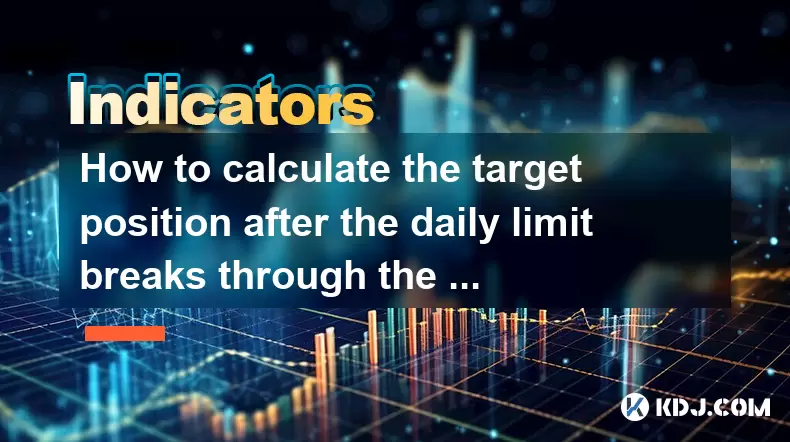
How to calculate the target position after the daily limit breaks through the previous high?
Jun 23,2025 at 02:57pm
Understanding the Daily Limit BreakthroughIn cryptocurrency trading, a daily limit typically refers to the maximum price movement allowed within a single trading day on certain exchanges. When this limit is breached, especially when it surpasses the previous high, traders often seek to calculate the target position or expected price movement following s...
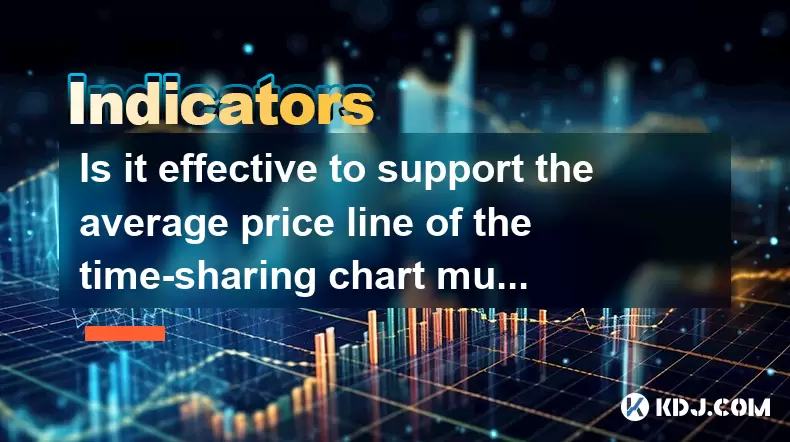
Is it effective to support the average price line of the time-sharing chart multiple times?
Jun 23,2025 at 01:36pm
Understanding the Average Price Line in Time-Sharing ChartsIn cryptocurrency trading, time-sharing charts refer to real-time price charts that display price movements over short intervals, often within a single trading day. Within these charts, the average price line, also known as the Volume Weighted Average Price (VWAP), is a commonly used technical i...
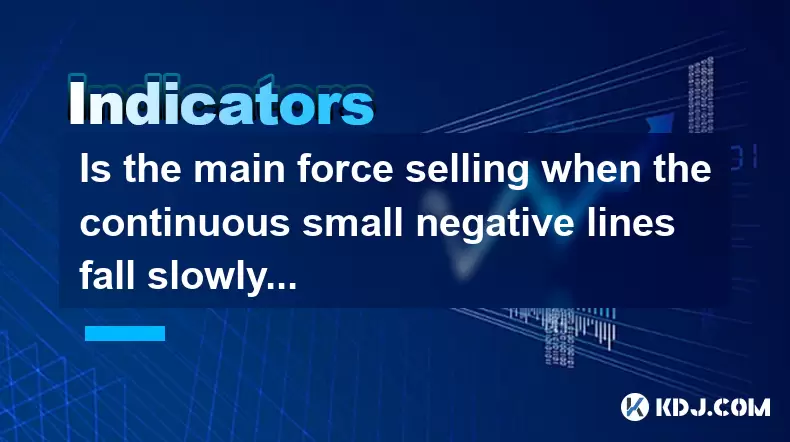
Is the main force selling when the continuous small negative lines fall slowly?
Jun 23,2025 at 03:35pm
Understanding Continuous Small Negative Lines in Cryptocurrency ChartsIn cryptocurrency trading, continuous small negative lines refer to a pattern where the price of an asset declines gradually over time with small bearish candlesticks. These candlesticks typically have short bodies and may or may not have wicks. This pattern often appears during perio...
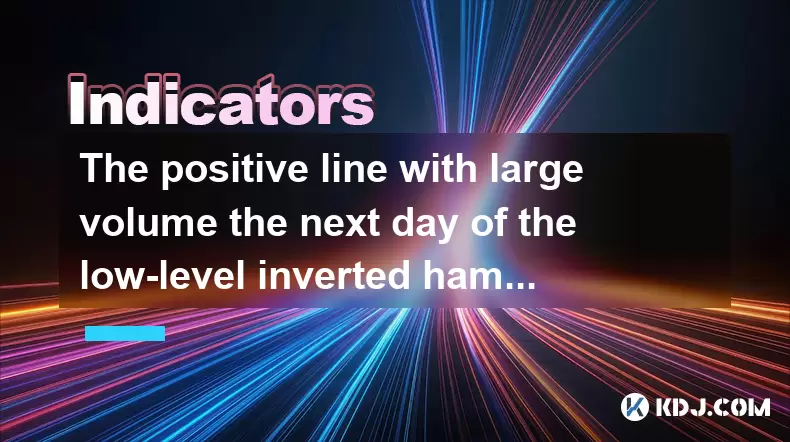
The positive line with large volume the next day of the low-level inverted hammer line confirms the reversal?
Jun 23,2025 at 01:21pm
Understanding the Low-Level Inverted Hammer LineThe inverted hammer line is a single candlestick pattern that typically appears at the end of a downtrend. It has a small real body near the bottom of the trading range and a long upper shadow, indicating that bulls attempted to push prices higher but were met with selling pressure. When this pattern forms...
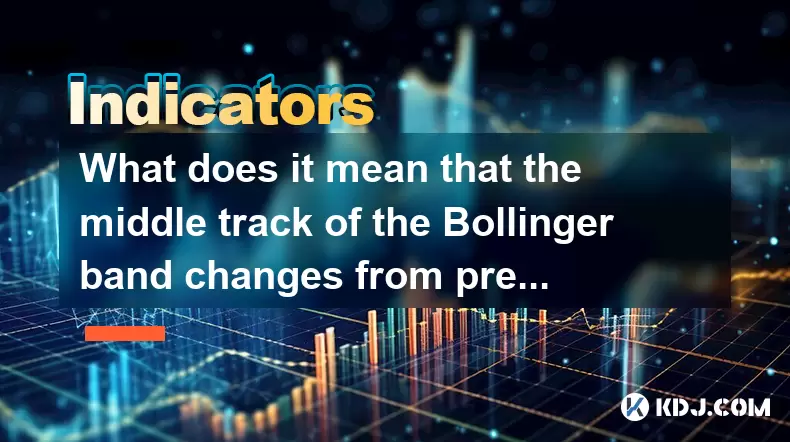
What does it mean that the middle track of the Bollinger band changes from pressure to support?
Jun 23,2025 at 03:01pm
Understanding the Bollinger Band StructureThe Bollinger Bands are a technical analysis tool used in cryptocurrency trading, developed by John Bollinger. They consist of three lines: a simple moving average (SMA) in the middle and two standard deviation bands above and below it. The middle track is typically set at 20 periods and serves as a baseline for...

How to read the sideways consolidation after the bottom volume and long positive line?
Jun 23,2025 at 02:28pm
Understanding the Sideways ConsolidationWhen analyzing cryptocurrency charts, sidewards consolidation refers to a phase where prices move within a narrow range without a clear upward or downward trend. This pattern often appears after significant price movements, such as a sharp increase followed by a period of equilibrium between buyers and sellers. In...

How to calculate the target position after the daily limit breaks through the previous high?
Jun 23,2025 at 02:57pm
Understanding the Daily Limit BreakthroughIn cryptocurrency trading, a daily limit typically refers to the maximum price movement allowed within a single trading day on certain exchanges. When this limit is breached, especially when it surpasses the previous high, traders often seek to calculate the target position or expected price movement following s...

Is it effective to support the average price line of the time-sharing chart multiple times?
Jun 23,2025 at 01:36pm
Understanding the Average Price Line in Time-Sharing ChartsIn cryptocurrency trading, time-sharing charts refer to real-time price charts that display price movements over short intervals, often within a single trading day. Within these charts, the average price line, also known as the Volume Weighted Average Price (VWAP), is a commonly used technical i...

Is the main force selling when the continuous small negative lines fall slowly?
Jun 23,2025 at 03:35pm
Understanding Continuous Small Negative Lines in Cryptocurrency ChartsIn cryptocurrency trading, continuous small negative lines refer to a pattern where the price of an asset declines gradually over time with small bearish candlesticks. These candlesticks typically have short bodies and may or may not have wicks. This pattern often appears during perio...

The positive line with large volume the next day of the low-level inverted hammer line confirms the reversal?
Jun 23,2025 at 01:21pm
Understanding the Low-Level Inverted Hammer LineThe inverted hammer line is a single candlestick pattern that typically appears at the end of a downtrend. It has a small real body near the bottom of the trading range and a long upper shadow, indicating that bulls attempted to push prices higher but were met with selling pressure. When this pattern forms...

What does it mean that the middle track of the Bollinger band changes from pressure to support?
Jun 23,2025 at 03:01pm
Understanding the Bollinger Band StructureThe Bollinger Bands are a technical analysis tool used in cryptocurrency trading, developed by John Bollinger. They consist of three lines: a simple moving average (SMA) in the middle and two standard deviation bands above and below it. The middle track is typically set at 20 periods and serves as a baseline for...
See all articles
























































































